
Thank you to 24 Carrot Writing for asking me to blog for them today. It’s a pleasure to be here talking about one of my favorite things: The Query Letter. A bit of background: It’s no secret that I’d queried a lot in the early 2010s (I’ve written about it in a bunch of places -- Articles about Querying and Writing - Query Godmother). After a few false starts, I signed with my third agent in the summer of 2013. This past summer, after seven years with the same agent, we parted ways—and I was honestly feeling like a bit of a failure. I’d been hoping for feedback on a manuscript and wasn’t prepared for my agent to be downsizing their list. In the middle of 2020, I took it really hard. All this to say that anyone can be in the query trenches. Writing a query can be scary. Remember, a query letter is a tool. It’s a way to put your words into the world. Don’t overthink the query letter. It’s manageable. There are parts to it. 1. Introduction (and opening paragraph): Sometimes this is called the “hook” part of the query. Include the title, the word count, the target age, and the genre of the book. A short tagline (elevator pitch) can be included in this section as well. It is not mandatory, though. If you have something personal to add, like that you met the agent at a conference, or took their workshop, do that here. If you don’t have anything personal, don’t force it. 2. Book section: Think of this as your back cover copy. This is the most important part of the query. Be specific, but brief. Try to express how your book is different than others. Use specificity about character goals, stakes, and motivations. This section should be the longest—after all the query is about your BOOK. Make sure you are answering these questions in this section:
Something about yourself and your expertise. What makes you the person to write this book? If you have any relevant published works, mention them here. Keep this part business. Don’t include things about your family or hobbies. Query strategies:
I’ll be honest, I have yet to sign with a new agent. However, my request rate is over 20%, so I feel like my query letter is working, and there are several people considering my work. Keep track of this sort of data, so you know when to revise and/or move to the next manuscript. Jumping into the querying pool can help you put aside your fears and anxieties about your work. Querying is forward motion. It is taking control of your career. Know yourself and what works for you. I wish you all good luck in 2021.  Bio: Kristine Asselin is the author of several works of children’s nonfiction, co-author of the middle grade novel The Art of The Swap, as well as the YA novels Any Way You Slice It and Falling for Wonder Boy. She loves being a Girl Scout leader and volunteering with the Society of Children’s Book Writers and Illustrators. She is a sucker for a good love song (preferably from the 80s), and can’t resist an invitation for Chinese food or ice cream (but not at the same time!). She lives in Central Massachusetts with her teen daughter and husband, and spends part of everyday looking for a TARDIS to borrow.
1 Comment
 By Kelly Carey It can happen when you excitedly present your latest work in progress to your critique group, and they take turns rattling off lists of picture books with your exact plot. Or when you are browsing the shelves at your favorite indie bookstore and find your book idea, with a stunning cover face out, written by someone else. Perhaps it was in a rejection letter from an editor that read “sorry, but we already have a similar book on our list”. The results are a stunning hit to your creative energy that can leave you with the niggling feeling that every idea you’ve ever had has already been done. The knee jerk response could be to delete the manuscript and snuggle under a blanket with a large bowl of ice cream admonishing yourself for ever thinking that you had a unique idea. I mean how could you really think your idea was original? You can! Take a breath and realize that while similar plots, themes, settings, and even characters can be found throughout kidlit, it’s your unique voice that puts the originality in the work.  Let’s take bears for example. Winnie-the-Pooh (published 1926), Little Bear (published 1957), Paddington (published 1958), The Berenstain Bears (published 1962) and Corduroy (published date 1968), are all kidlit books featuring an anthropomorphized bear as a main character. But they happily share publishing success and shelf space because each author gifted their bear with their own unique author voice. Despite these well-known bears, still even more authors have found their own original voice inside a bear main character. Nancy White Calstrom put her creative musings into Jesse Bear (published 1996) and Karma Wilson presented Bear Snores On (published 2002). What a shame if Bonnie Becker had never sent A Visitor for Bear (published 2008) out on submission because bears seemed unoriginal? What if Jory John’s delightful bear in the Already series (published 2014) never existed because John’s was worried about Winnie or Paddington? What if Ryan Higgins had trashed Mother Bruce (published 2015) because…well…bears? The kidlit world is enriched because all of these clever bears found a home in a book. Their originality comes in the personality the authors and illustrators gave each bear. In the writing, the author’s tone, style and personal touch honed by a fusion of life experience and writing skill offer up a character as unique as a fingerprint. Each author brings to their bear that special voice, their fingerprint, which makes each of these wonderful kidlit bears unique and original.
Worried that there are too many dragon books? Pirate books? Train books? Princess books? Stop! About ten years ago, an Australian comedy group called The Axis of Awesome presented their theory that dozens of popular songs were written with the same four chords. Apparently concerns about originality can stymie songwriters too! https://www.buzzfeed.com/alanwhite/73-songs-you-can-play-with-the-same-four-chords?utm_term=.gdEdQDqBzV#.ncwx93AlD6 It’s an entertaining and fascinating idea and more proof that the same ingredients don’t necessarily produce the same outcome. In the case of music, the same four chords have produced songs with vastly different outcomes. The same can be true in your storytelling. We can all play with pirates, on a high seas adventure, searching for treasure, and while our character, setting, plot and themes could arguable be identical, like the chords in those songs, we will still produce original works. The secret original ingredient is you. So go ahead. Write your bear story. Just make sure his growl has your unique voice.  By Annie Cronin Romano “Where’s Papa going with that ax?” said Fern to her mother as they were setting the table for breakfast. “Out to the hoghouse,” replied Mrs. Arable. “Some pigs were born last night.” “I don’t see why he needs an ax,” continued Fern, who was only eight. As you probably know, the above excerpt is the opening of E.B. White’s Charlotte’s Web, a classic in children’s literature. When I was a child, it was one of my favorite books. When I read the first page and realized those cute little piglets could be in danger, I kept reading. Fern’s concern about a threat to the piglets is established right away, and I had to find out if and how Fern could stop this horror from occurring. I was hooked. The same goes for picture books I love. I’m compelled to read past the first page in picture books whose openings create a strong curiosity about a situation: On a cold afternoon, in a cold little town, where everywhere you looked was either the white of snow or the black of soot from chimneys, Annabelle found a box filled with yard of every color. In these first lines of Mac Barnett’s Extra Yarn (illustrated by Jon Klassen), I was pulled in by my wonder of how this colorful yarn was going to affect the plain little town. Although both these examples of opening lines grabbed me quickly, others may need to read further to know a book is a keeper. In novels, authors have some time to lure the reader in. A writer of longer works can take a few paragraphs to set the tone, or even a few pages to a chapter or so to bait the reader into the character’s voice or world. But in picture books, you have the first page. You’ve got to hook ‘em fast and come out swinging. It’s vital to the life of your story. Be it picture books or novels, if the author doesn’t capture the reader early on, the chance of losing the reader increases. A lot. But what elements make a strong hook? What is it that pulls the reader in? To help you with examining your openings, I am going to give you an assignment. Don’t worry. There’s no exam at the end. I’ll use the honor system!
This exercise can help clarify what makes a strong hook and what doesn’t. Study the first pages of other works to help make your book’s opening the strongest and sharpest hook it can be. Then reel ‘em in! ~Annie  ~ by Amanda Smith Earlier this year I participated in an online picture book competition where the notion was to enter the first fifty words of your manuscript. I knew just which manuscript I wanted to enter and I eagerly prepared the other requirements of the competition. Then I added my First Fifty. There, all by themselves, on a lonesome page, those fifty words, were so, well, blah! They were well written, they were important to the story, but as the only part of my story these judges would see, they were so absolutely inadequate. They did not showcase my feisty female character. They did not reveal my interesting premise. They did not hint at the conflict. They offered nothing but a setting. As writers we have the privilege of knowing the whole story. We even know the back story. We know the characters. We know the inspiration behind the story – the part that initially stirred our passion to write that particular story. This is also our handicap. Because we rely on how good the story is, how deep the passion runs, we don’t always start in the strongest way possible. We know we’re getting to the good stuff. What this competition taught me is the beginning needs to be the very best stuff. If readers aren’t captured by my First Fifty, they might not hang around to get to the good stuff. In my case, with some editing, I was able to flip my first and second paragraphs. This simple move brought the heart of my story to my First Fifty. What should your First Fifty highlight? 1. Voice 2. Main character 3. Conflict/problem 4. Setting 5. Humor 6. Universal theme 7. Passion Let’s look at a few new picture book examples where the authors grabbed my attention with their first fifty words: 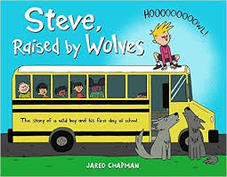 STEVE, RAISED BY WOLVES by Jared Chapman (Little Brown and Company 2015) Steve was raised by wolves. He loved wrestling and hunting and chasing campers. Then one day Steve’s mom walked him through the woods, past the lake and to the bus stop. “Steve,” his mom said, “I know you’re anxious about going to school. It’s not always easy to get along with humans, but just be yourself…” The First Fifty in this book unfold across three spreads and give the reader voice, character, setting, conflict, a foreshadowing of the dry humor to come, and a smidge of the universal theme. 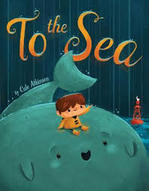 TO THE SEA by Cole Atkinson (Disney Hyperion 2015) This is Tim. One day after school Tim met Sam. Sam lived in the sea, but took a wrong turn and got stuck here. He didn’t know his lefts from his rights. The other kids were too busy to notice the big blue whale. Sometimes Tim felt no one noticed him either. Here the First Fifty run across two spreads. Can you find which elements are established here to draw the reader in? 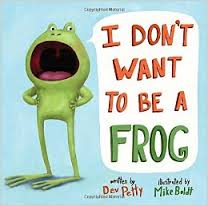 I DON’T WANT TO BE A FROG by Dev Petty, Illustrated by Mike Boldt (Doubleday books for Young Readers, 2015) “I want to be a cat.” “You can’t be a cat” “Why not?” “Because you are a FROG.” “I don’t like being a frog. It is too wet.” “Well, you can’t be a cat.” “I want to be a rabbit.” “You can’t be a rabbit.” “Why not. Look, I can hop.” In this book three spreads are used for the First Fifty. The text is entirely in speech bubbles. I know you want to read the rest. What drew you in? After my excursion to the bookstore and piles and piles of picture books, I noticed a trend. Many books started in a less stellar way, and I had to make a choice to hang in there and get to the good stuff. And honestly, with some, I didn’t hang in. However, the books that grabbed me with their First Fifty held my attention all the way through. They were so delightful I had to read them again. And then again to pour over the illustrations. If your First Fifty shine, your book will shine! |
Peruse blogs for advice and tips from KidLit creatives.
Categories
All
Archives
April 2024
Click to set custom HTML
Click on the RSS Feed button above to receive notifications of new posts on this blog.
|
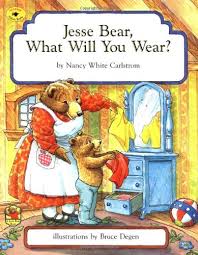
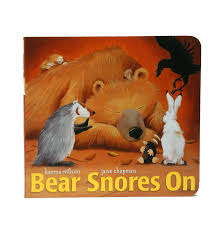
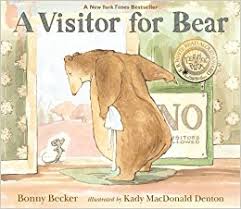
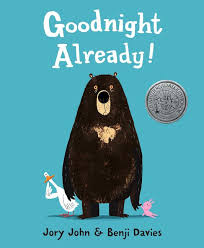
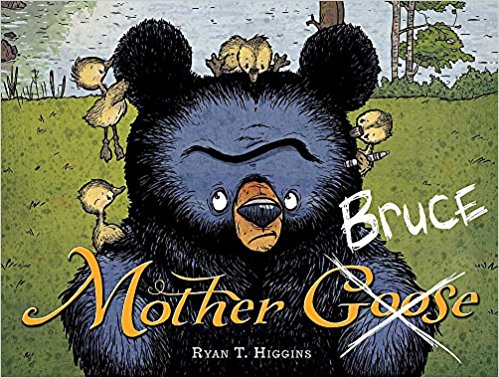
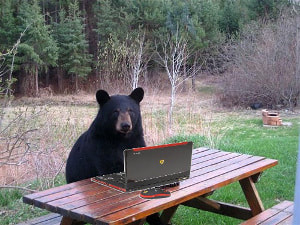
 RSS Feed
RSS Feed